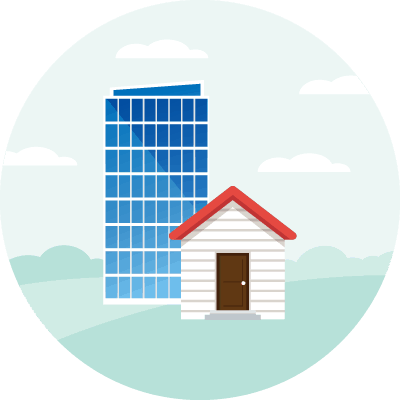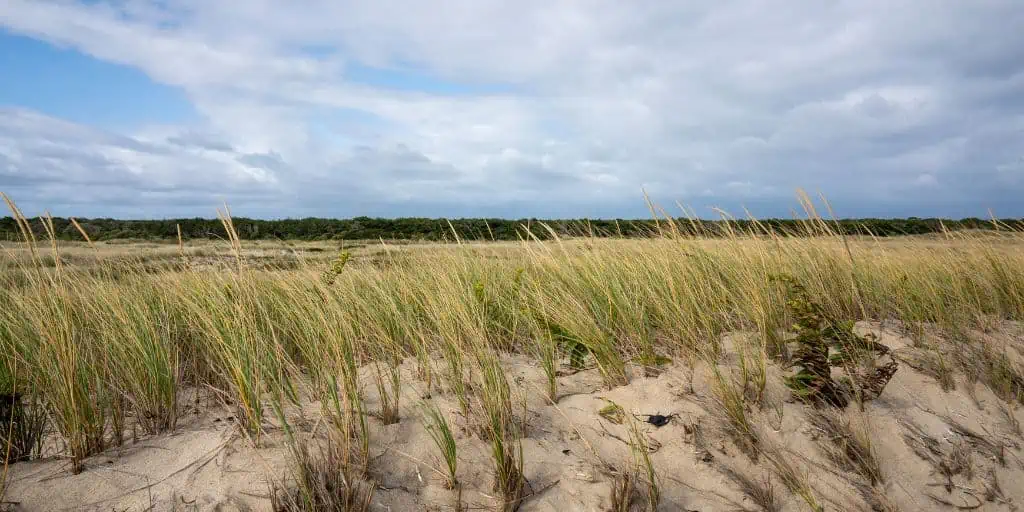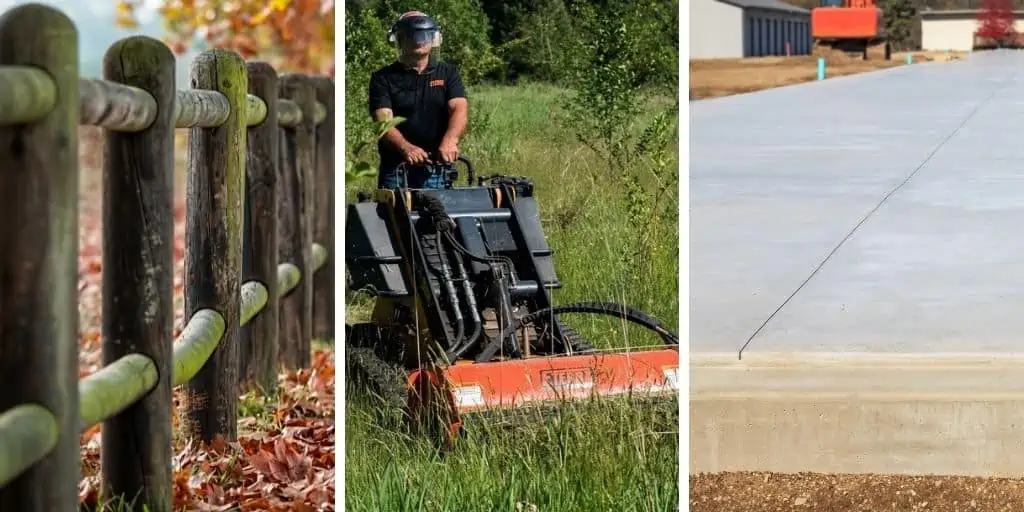What Is Raw Land?
Shortcuts
- Raw land is a piece of land that has yet to be improved or developed, usually without access to the infrastructure needed for human use.
- Many people buy land raw land for different purposes, but investors consider its potential for appreciation (increasing in value over time).
- Raw land appreciates over time because there’s always demand for it while its supply is limited.
- Due to the complexities of financing raw land investments, many land investors explore alternative property acquisition methods, such as seller financing.
Raw Land Overview
Raw land is a plot of land with no buildings and no access to public utilities. This is one reason it’s also called undeveloped land.
Raw land exhibits diverse characteristics determined by location, size, and terrain. For example, it can be flat, hilly, wooded, or arid. In addition, some raw land may offer access to natural resources like water, minerals, or timber, while others may be situated in remote or hard-to-reach areas.
As a blank canvas, raw land can serve various purposes[1]. These uses include agricultural activities (such as farming, ranching, and forestry), recreation (such as camping, hiking, hunting, and fishing), or business (for residential, commercial, or industrial development).
Developing raw land can be complex and costly, involving legal, environmental, and construction challenges. The process involves obtaining permits, complying with zoning regulations, and constructing essential infrastructure like roads, bridges, utilities, and drainage systems.
Raw land investing also often entails environmental remediation. Depending on the state of the land, this includes addressing soil erosion, controlling water pollution, or preserving the habitats of endangered species, among others.
RELATED: 50 Surprisingly Creative Uses for Vacant Land
Raw Land vs. Vacant Land
The distinction between raw land and vacant land lies in development. Raw land remains completely untouched, whereas vacant land has the necessary preparations for future development.
Vacant land typically lacks above-ground physical structures.
Investing in Raw Land
Investing in raw land can be profitable due to its potential for exponential capital growth. Despite its disadvantages, the advantages generally outweigh the drawbacks.
Here are some of its pros and cons.
Pros
- Affordability. Raw land costs less than developed land, so if you make the right improvements to attract people to the property, you can earn significant returns in the long run.
- Low maintenance. Land only needs a little upkeep because it doesn’t get damaged or worn down easily as buildings do. Insurance may also be unnecessary (note that this depends on the specific circumstances and risks associated with that piece of land).
- Reduced competition. Land investing typically faces less competition than other forms of real estate investment, as most buyers focus on traditional houses, drawing more investors.
- Protection against market changes. The price of raw land doesn’t change dramatically as the prices of houses do, so the value of undeveloped land usually increases steadily.
- Appreciation. Land becomes more valuable over time because people always need it, but only a limited amount is available. Raw land is even more scarce. This makes the value of raw land only increase over time. That said, not all pieces of raw land appreciate at the same rate due to market conditions, demand, and location.
An excellent way to determine how high a property’s price can get over a certain period is by checking how feasible it is to develop. The faster and cheaper you can improve a piece of raw land, the more it can appreciate quickly and at a higher rate.
Cons
Like any venture, investing in raw land has its drawbacks as well.
- Zoning constraints. Like land restrictions[2], rules about using the land can limit your options. For example, if you buy a landlocked property, you may need to negotiate its access to roads and other services.
- Financing difficulties. It may be cheap to buy land, but you often need a lot of money upfront. Lenders generally hesitate to finance land due to its relatively niche nature, but some financial institutions and lenders specialize in land loans and offer financing options for land purchases.
- Permit costs. If you want to build on raw land, you need permission from the local government, which can be expensive. In addition, merely getting the approval to start construction can cost thousands of dollars.
- Unclear valuation. It’s hard to know the exact value of raw land because comps aren’t available for land as they are for houses or buildings, or the existing data is incomplete or inaccurate.
RELATED: The Truth About Land Investing: 21 Point Due Diligence Checklist For Buying Vacant Land
Other Things to Consider When Investing in Land
Any land investment is generally good when it performs as well as you expect (that is, you earn your target returns within your ideal timeframe). However, despite your improvements, it will feel less of a bargain when it doesn’t appreciate as projected.
Also, not every parcel of raw land is a good investment, such as an undeveloped property in a bleak location. Unwanted real estate is more of a liability than an asset, which can be difficult to liquidate.
In any case, if you don’t do anything to increase its value, you won’t generate any passive income from it[3].
Finally, nearby communities may need to approve your purchase and development plans. Read up on local anti-development sentiment[4] that may exist before you commit your money.
How to Finance a Land Investment
Getting money to invest in raw land can be tricky, but you can use a special type of loan called a raw land loan to buy undeveloped land.
It comes with a few caveats.
- Most lenders hesitate to give money for land that most people can’t use[5]. Even with a raw land loan, many investors pay around 20% of the property’s sale price, and this is the best-case scenario assuming the investor has excellent credit[6] and a detailed investment plan[7]. Otherwise, the lender may not agree to shoulder the rest.
- Raw land loans also come with high interest rates (on average). Unfortunately, there’s no way around it because the lender doesn’t have much guarantee that they’ll get their money back if you can’t pay.
- If you want to get a land loan without a specific timeline for development, you may have to pay up to 50% upfront. Due to the higher risk associated with financing raw land, lenders may request a larger down payment to offset this risk. Additionally, some lenders may request collateral in the form of another valuable asset, while others may request both a down payment and collateral.
- Finally, the terms for raw land loans can be as short as 24 months, followed by a larger payment at the end called a balloon payment[8].
Because financing raw land can be difficult, many land investors explore other creative ways to fund their purchases, such as owner or seller financing.
Sources
- Ly, L. (2023, February 24.) How We Found Land to Build On—and How You Can, Too. Garden Betty. Retrieved from https://www.gardenbetty.com/how-we-found-land-to-build-on/
- 11 Ways to Generate Passive Income for Landowners. (2021, July 27.) Ice House America. Retrieved from https://www.icehouseamerica.com/blog/11-ways-to-generate-passive-income-for-landowners
- Major Land Uses. (2019, August 20.) U.S. Department of Agriculture Economic Research Service. Retrieved from https://www.ers.usda.gov/topics/farm-economy/land-use-land-value-tenure/major-land-uses/
- Brasuell, J. (2018, March 1.) Survey: Anti-Developer Sentiment Drives Anti-Development Sentiment. Planetizen News. Retrieved from https://www.planetizen.com/news/2018/03/97478-survey-anti-developer-sentiment-drives-anti-development-sentiment
- Tomsich, E. (2023, January 11.) Land Loans: Everything You Need to Know. Rocket Mortgage. Retrieved from https://www.rocketmortgage.com/learn/land-loans
- Barroso, A. & O’Shea, B. (2022, December 2.) What Is a Credit Score, and What Are the Credit Score Ranges? NerdWallet. Retrieved from https://www.nerdwallet.com/article/finance/credit-score-ranges-and-how-to-improve
- Schneider, J. (2021, February 9.) 10 Tips for Developing Raw Land. HowStuffWorks. Retrieved from https://home.howstuffworks.com/real-estate/buying-home/10-tips-for-developing-raw-land.htm
- Hammer, S. (2023, January 17.) How Do You Get a Land Loan? Rates and Procedure, Explained. ValuePenguin. Retrieved from https://www.valuepenguin.com/mortgages/how-do-you-get-a-land-loan








